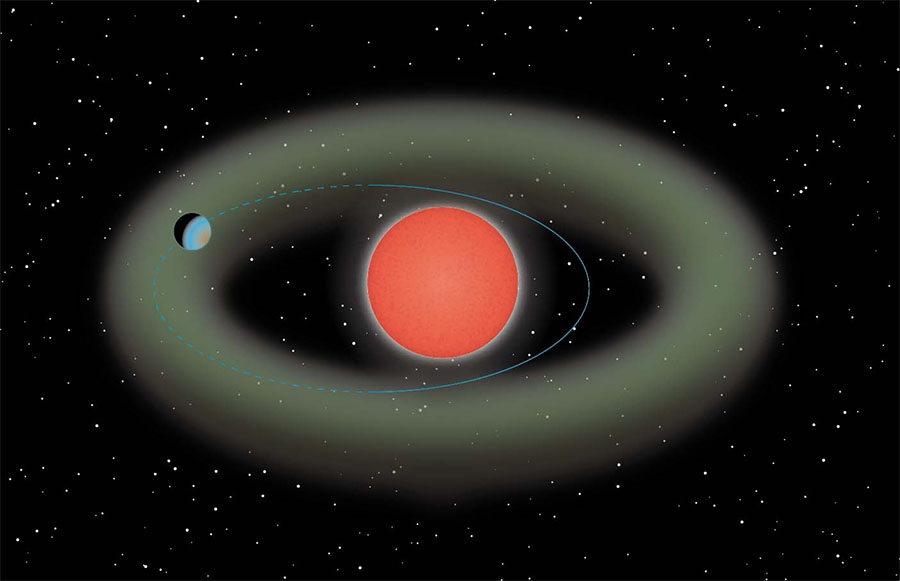What’s like The Sun and The Earth – only Redder and Heavier?
Astronomers have discovered a super-Earth – planets that are much like our Earth but heavier – near the habitable zone of a red dwarf star, only 37 light-years from us. That’s really really close to our planet in astronomical terms!

About 75% of the stars in the Milky Way are red dwarfs – stars smaller than our Sun – and one can find many of them in our solar neighbourhood. They are ideal targets to look for planets outside our Solar System and for life outside our Earth.
The newly discovered red dwarf star is known as Ross 508. The star and its companion planet, Ross 508 b, are located in the constellation Serpens.
For a planet to have signs of life, like on planet Earth, it needs to be located at a certain distance from its “companion” star, where the temperature and conditions are just perfect for liquid water to exist on the planet’s surface. Scientists call this region the ‘habitable zone’ and guess what? Ross 508 b lies on the inner edge of this habitable zone.
The team of astronomers, led by Professor Bun’ei Sato at the Tokyo Institute of Technology, also found that the planet moves in an elliptical orbit so that part of it crosses the habitable zone.
To observe planetary systems like Ross 508, scientists at the Astrobiology Center in Japan developed a special infrared observational instrument called the Infrared Doppler (IRD), mounted on the Subaru Telescope. This is because red dwarfs are cool and don’t emit much visible light compared to other types of stars, making it difficult to study them. Because of that, they appear brighter in infrared wavelengths.
With powerful telescopes like Subaru, scientists can now study further if water or life is present in Ross 508 b and check for better candidates for future habitable planets around red dwarfs.
Cool Fact:
One year on this planet is equal to 11 days on Earth. This means you will celebrate more birthdays on planet Ross 508 b and live a very long life compared to that on Earth!
This Space Scoop is based on a Press Release from NAOJ.
Source: Space Scoop
🇵🇹 Versão portuguesa disponível neste site


Leave a Reply